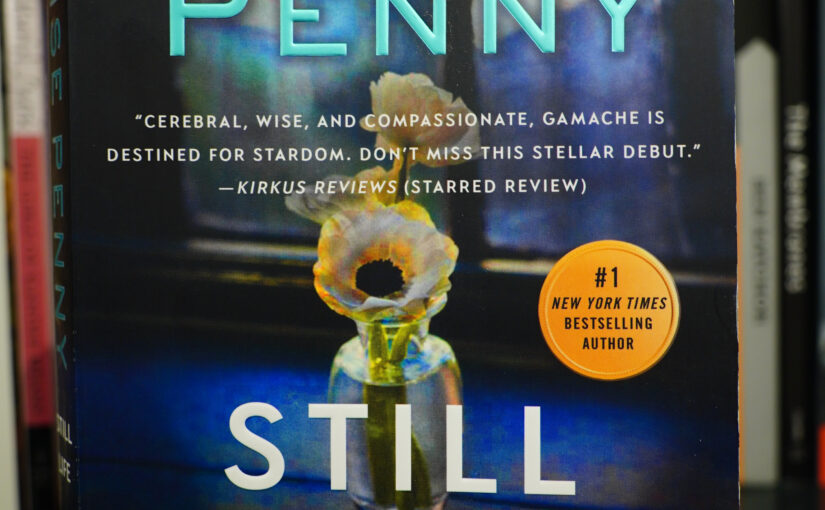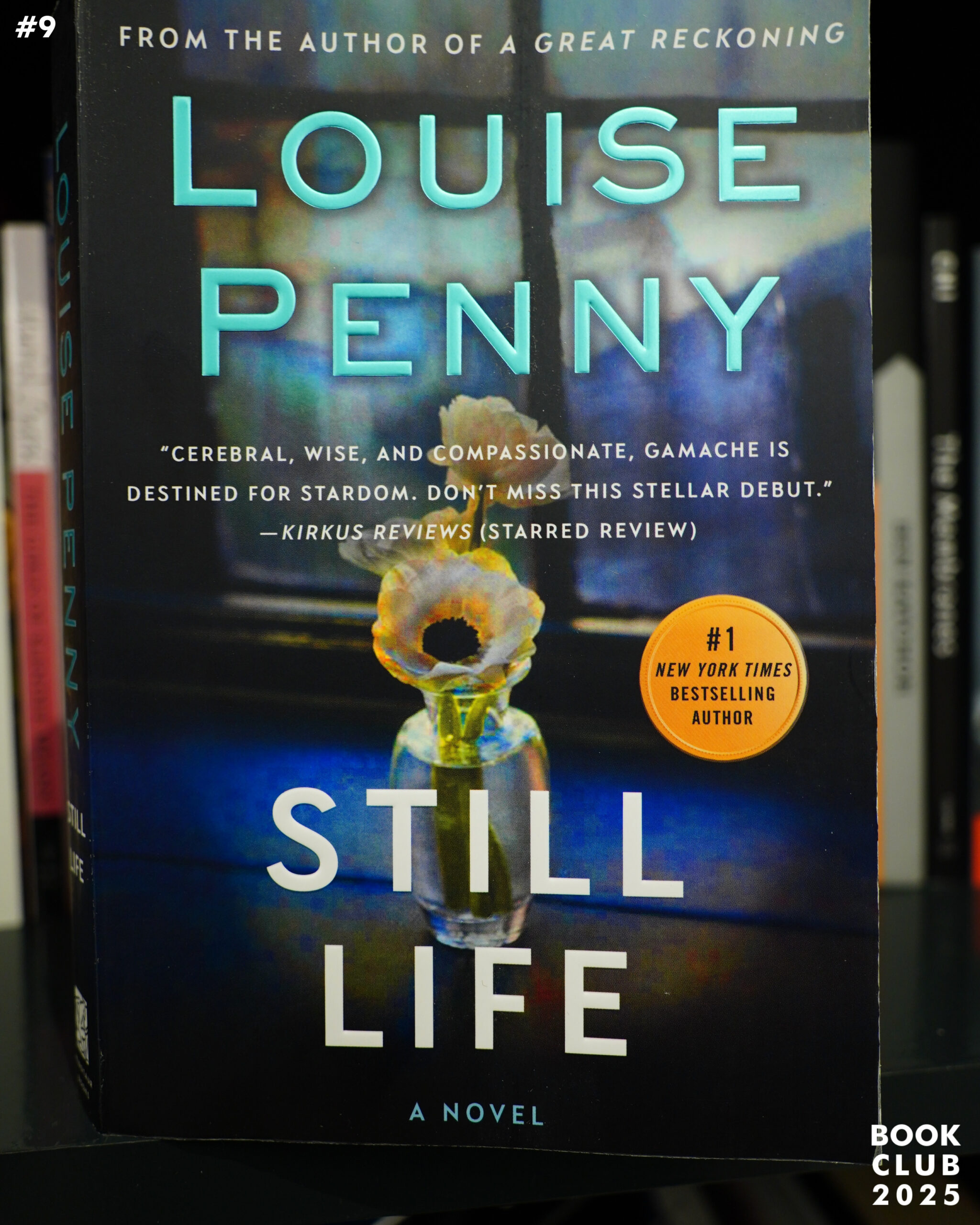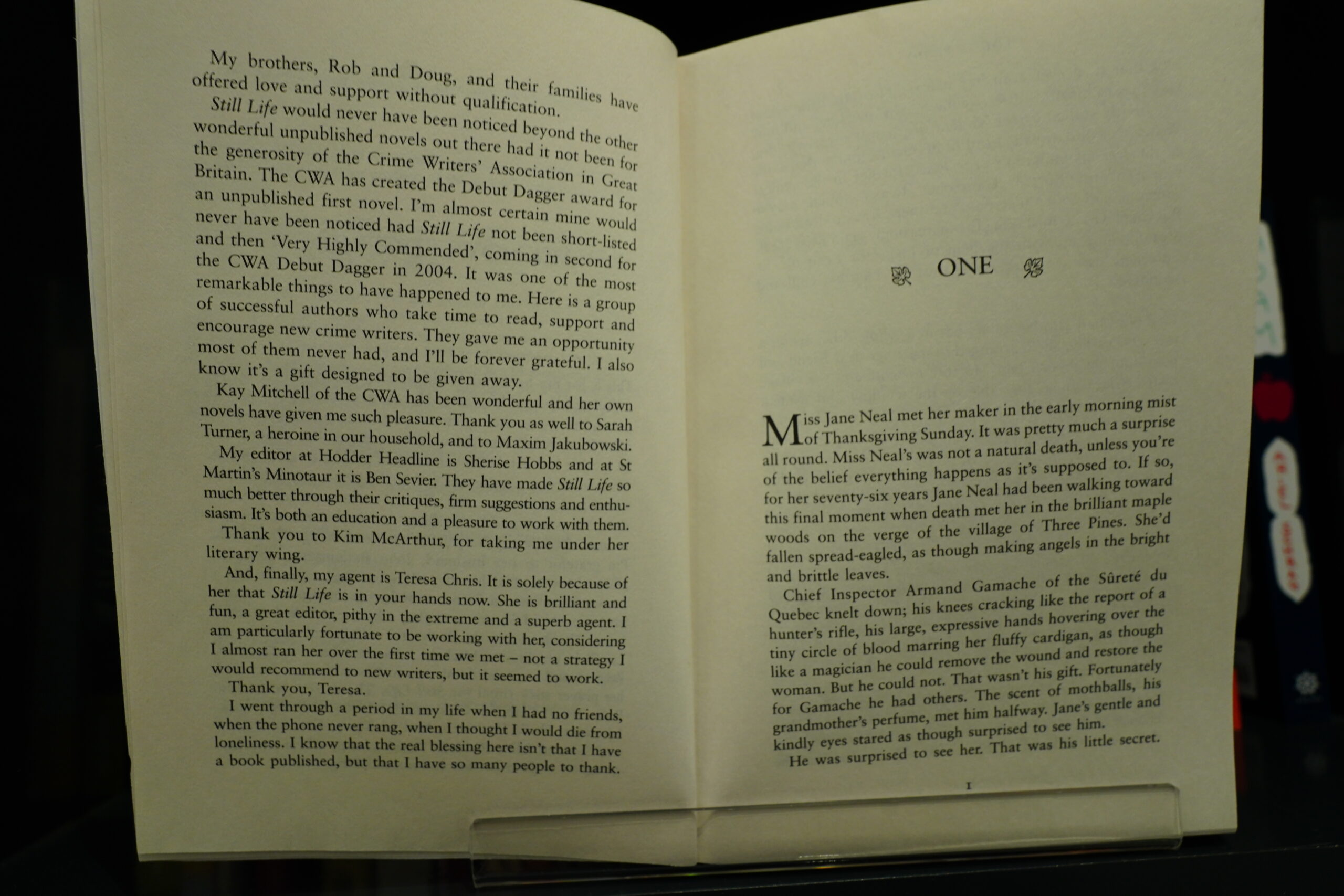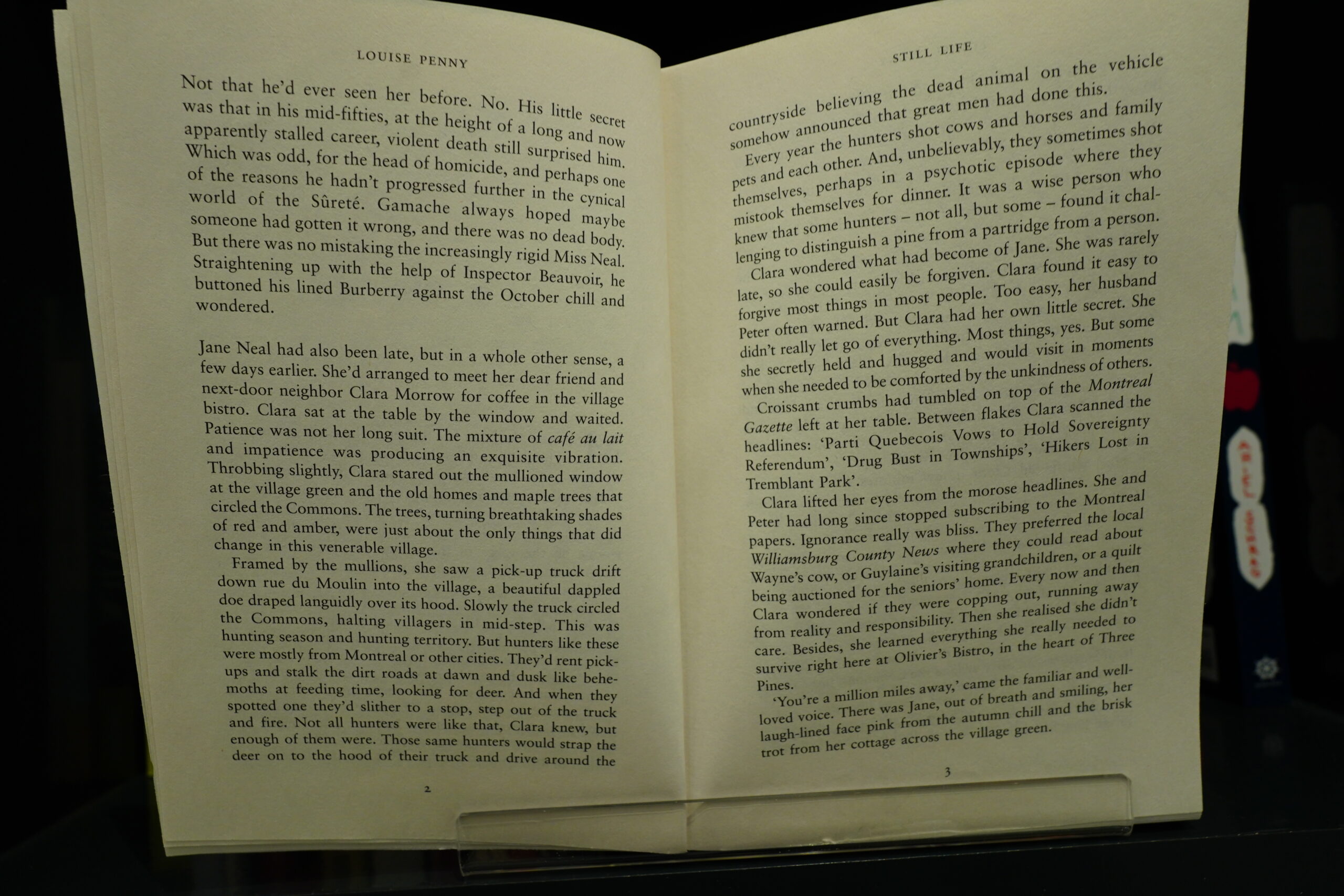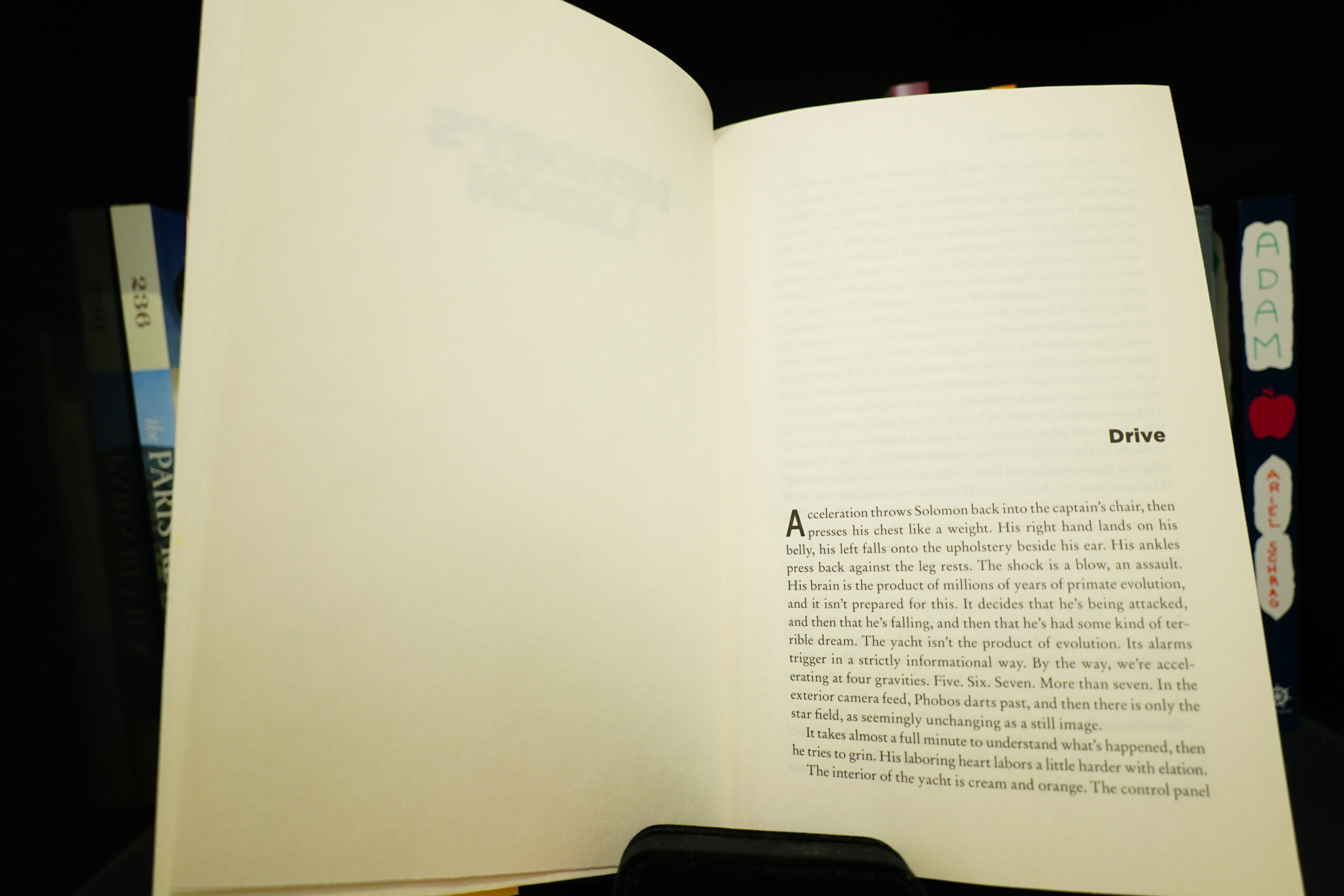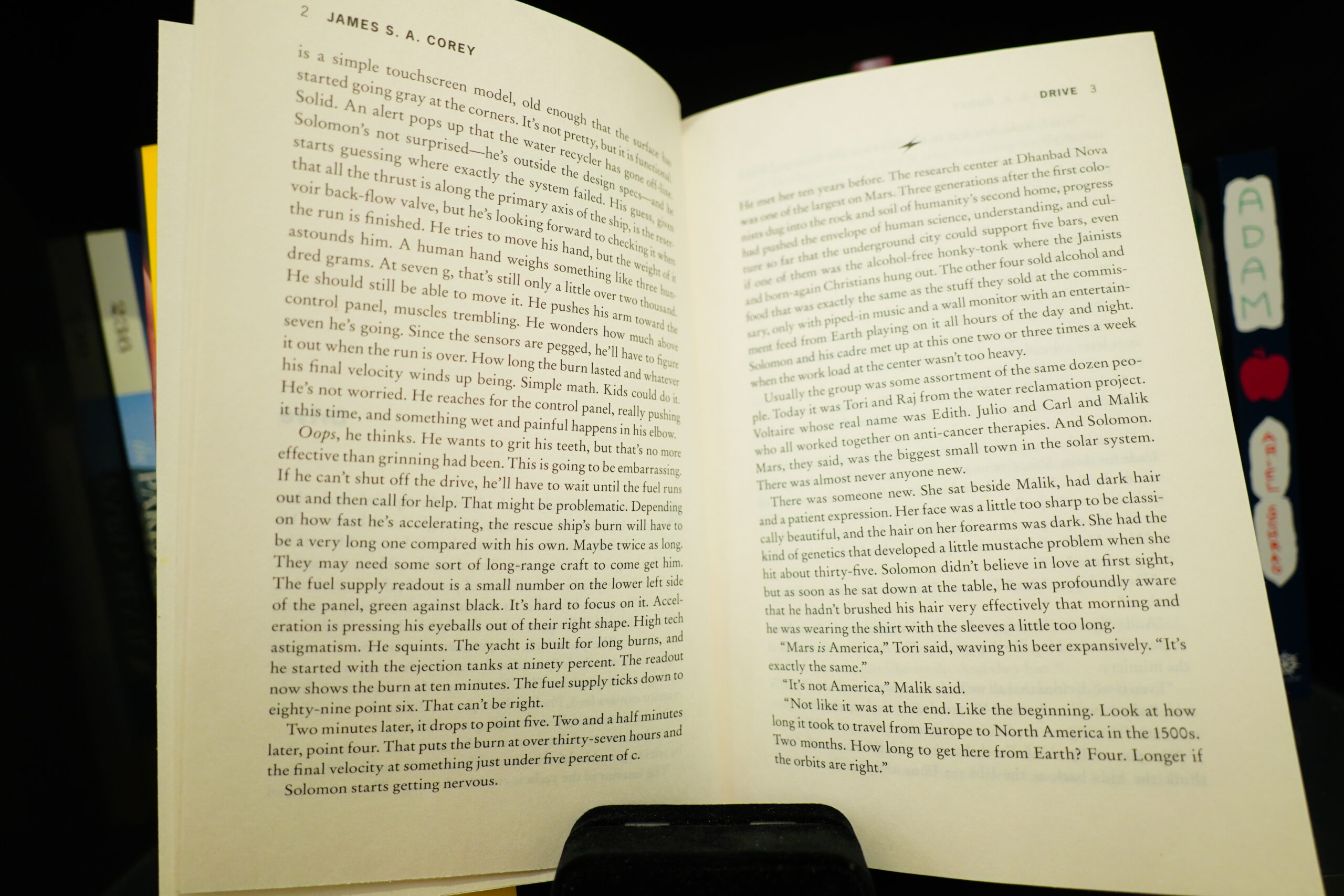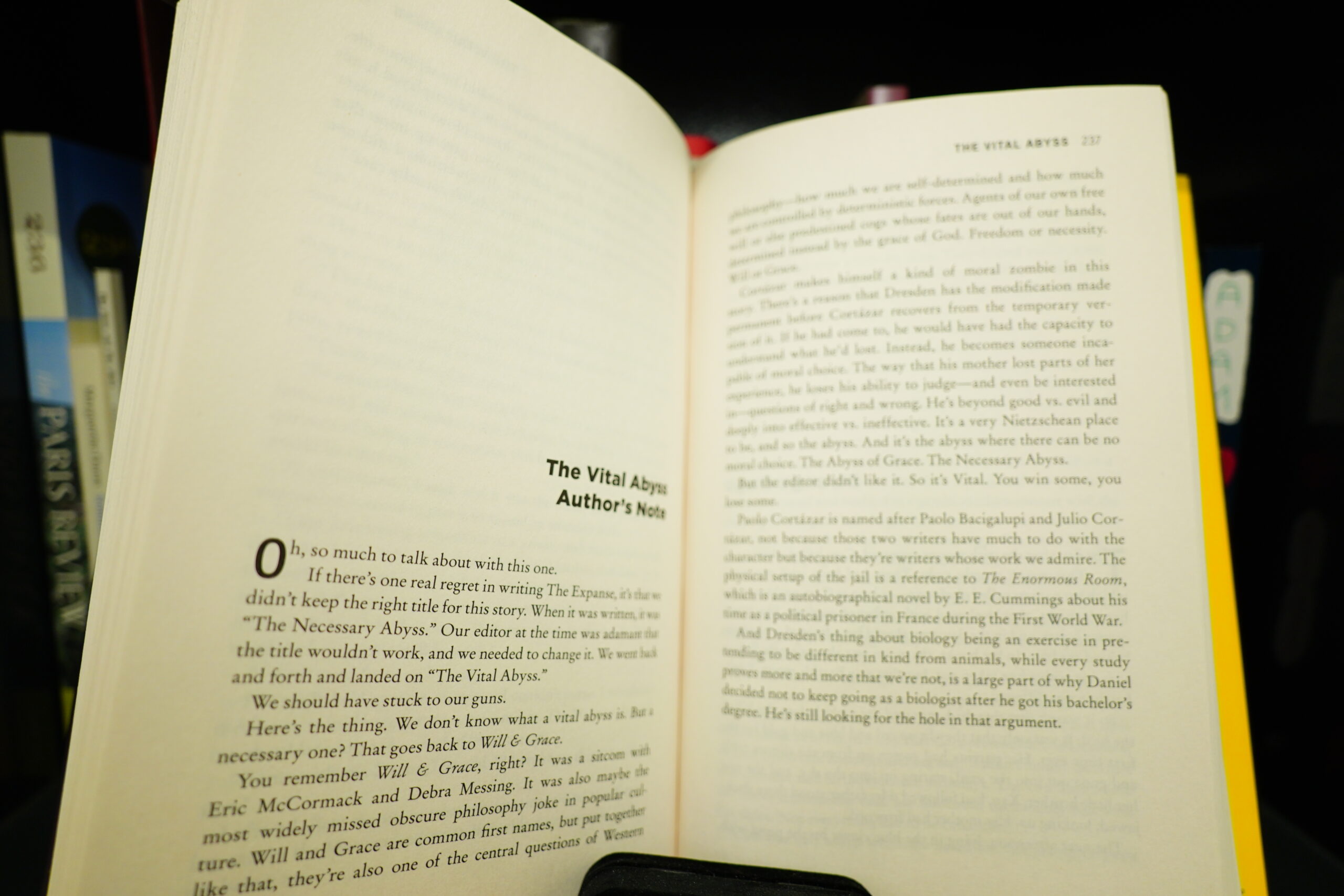
I got a whole bunch more of the books I missed in 2024 in the mail on Friday, so it’s time to get some more reading done. And like the previous Daze, I’m mixing these books I found on various “best of 2024” lists and then realised that I’d forgotten to buy with a bunch of small press stuff I bought from Domino Comics.
OK, let’s get started… and for musical accompaniment, music from 2002 only.
| The Notwist: Neon Golden |  |

10:12: Final Cut by Charles Burns (Pantheon Books)
I’ve loved Burns ever since I was a teenager (or pre-teen? *counts on fingers* nope, but almost), and I still think that many of his shorter works are absolutely flabbergastingly good (i.e., everything in Raw Magazine, including the Big Baby book, and also perhaps including Defective Stories).
Then you get to his major opus Black Hole, which sort of expanded on some of his obsessions… and the first two thirds are flawless. And then the ending is meh. And then there’s the X’d Out sequence, where the first third is flawless, and then the ending is meh.
Heh heh:

In 2024, Burns released a short work called Unwholesome Love, and it was really good. And also Final Cut, which is a longer book, and is on one third of the TCJ’s contributors’ lists (or something), and I’m just typing all of this to explain that my expectations for Final Cut are very low, even if I am a Burns fanatic.
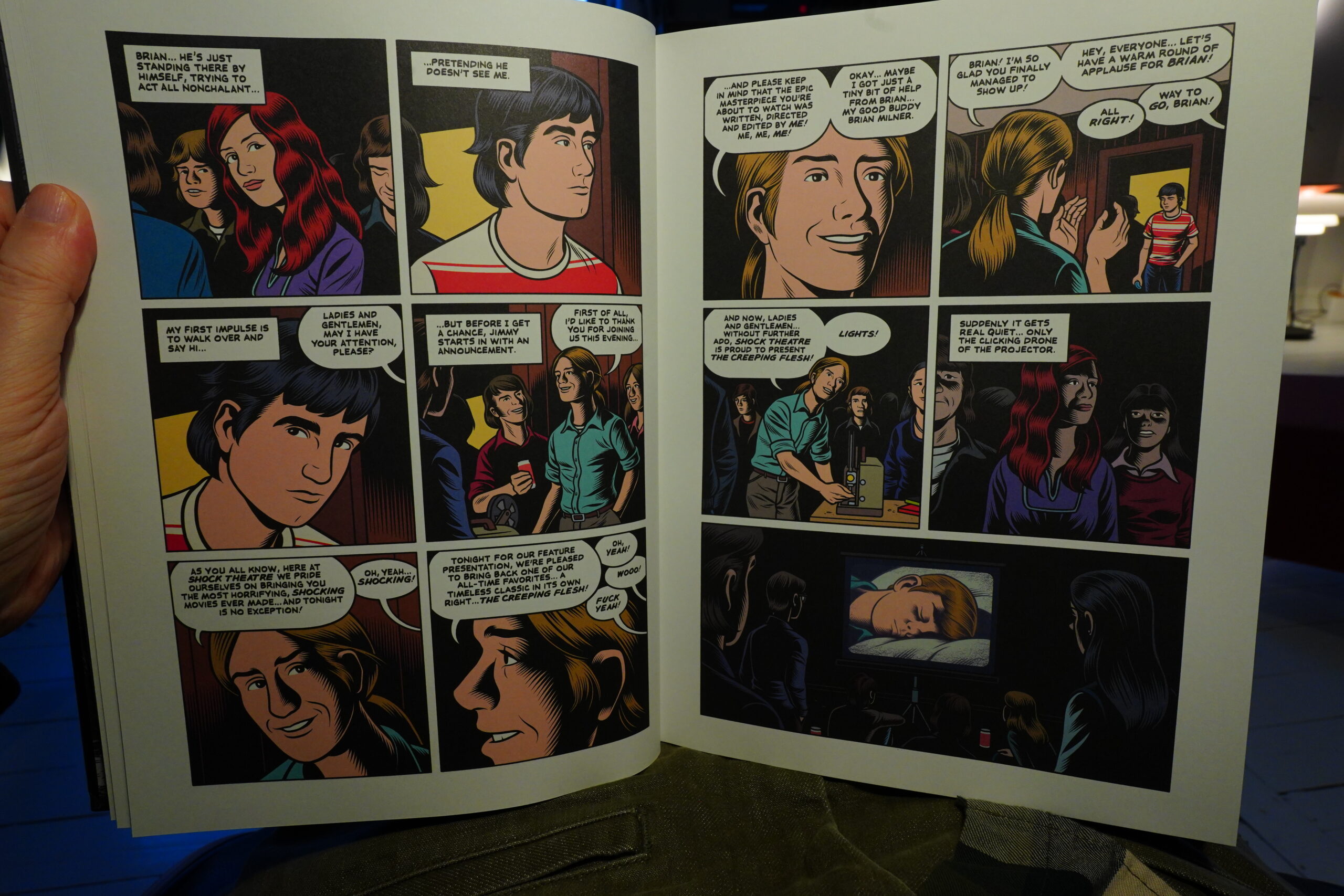
The printing is a bit odd. I appreciate that they’ve used matte paper, but the blacks aren’t as black as they should be — I feel that Pantheon has skimped on the amount of ink or something.
This is a return to Burns staples — teens hanging out…
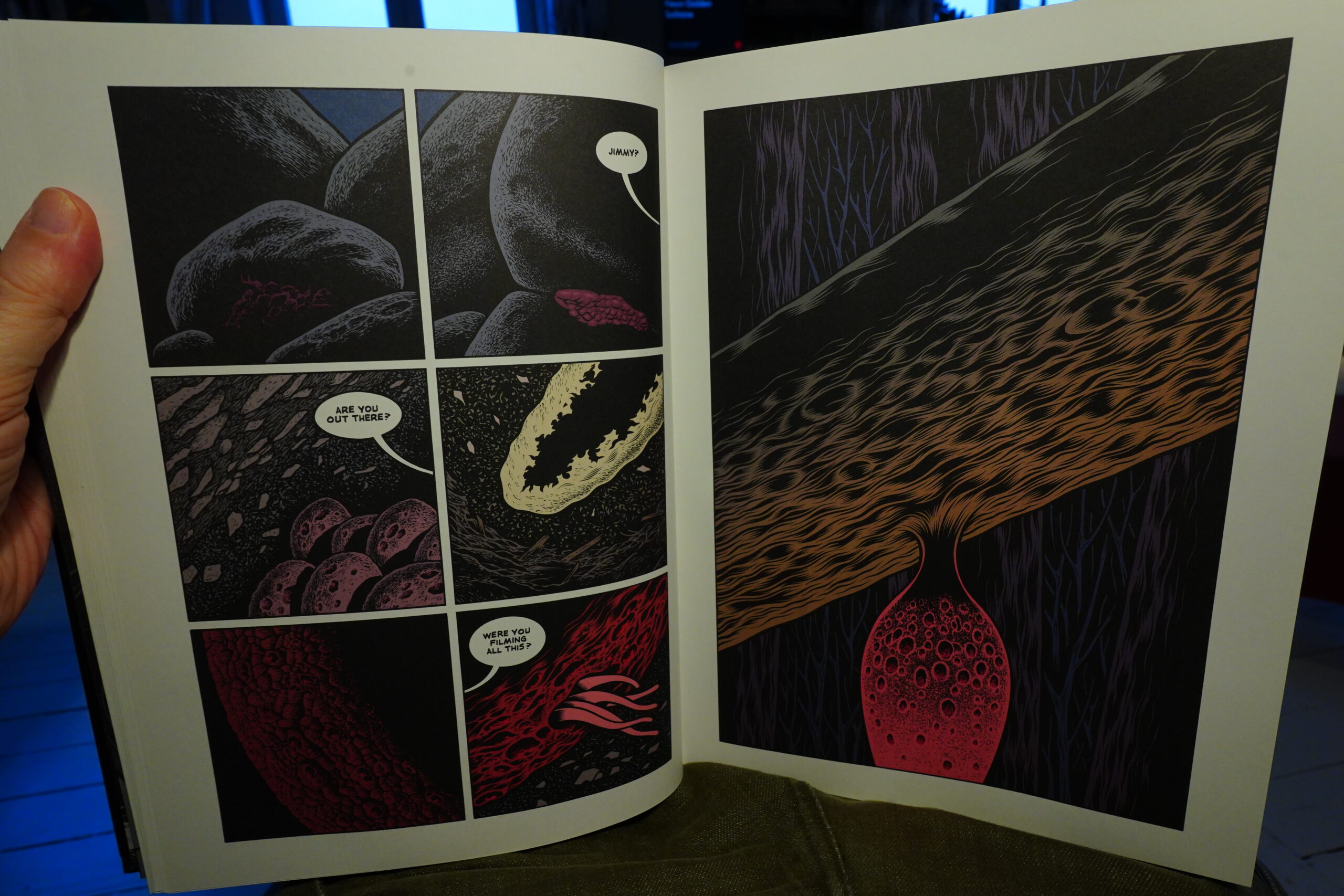
… and body horror stuff.
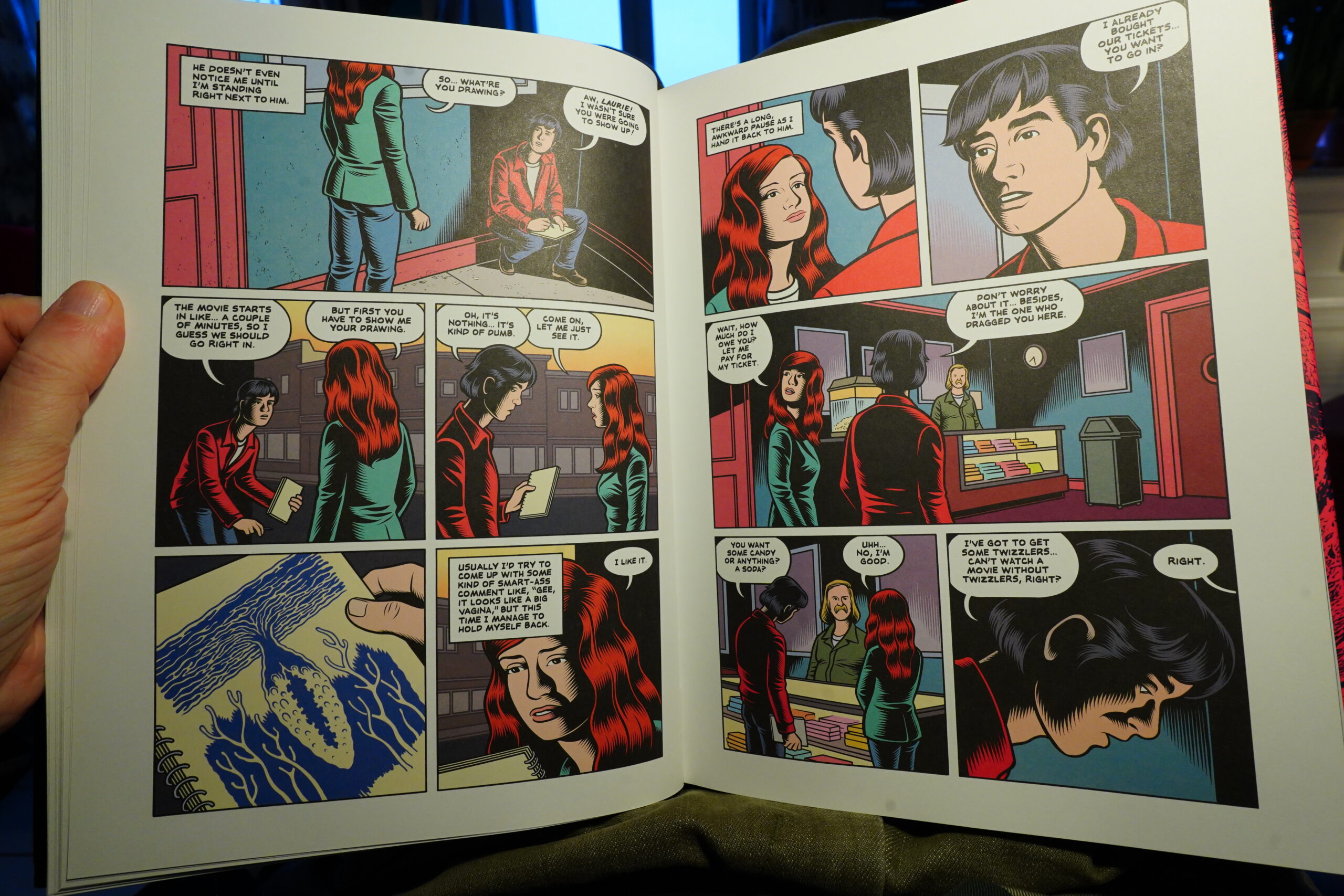
And it’s… it’s good? It’s good. He even gets in some sly digs at critics: “It looks like a big vagina”. See, if you’re doing self criticism, you’re then immune to somebody criticising your work. Sorry; those are the rules; I didn’t make them.
| Pet Shop Boys: Disco 3 |  |
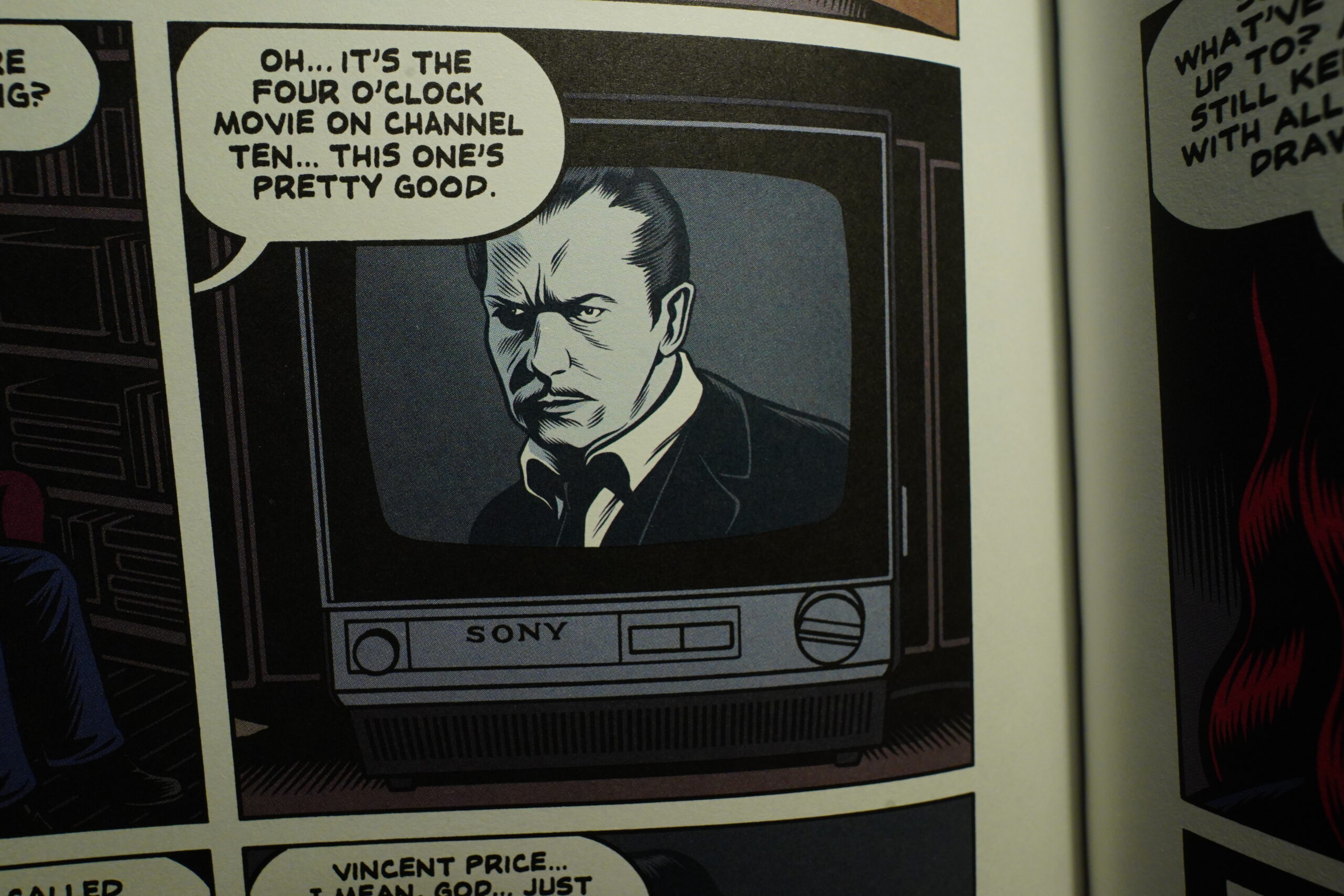
OK, I’m gonna do the geekiest complaint ever: I found Burns’ aspect ratio choices weird. Like here he has a TV being 5:4 instead of 4:3.
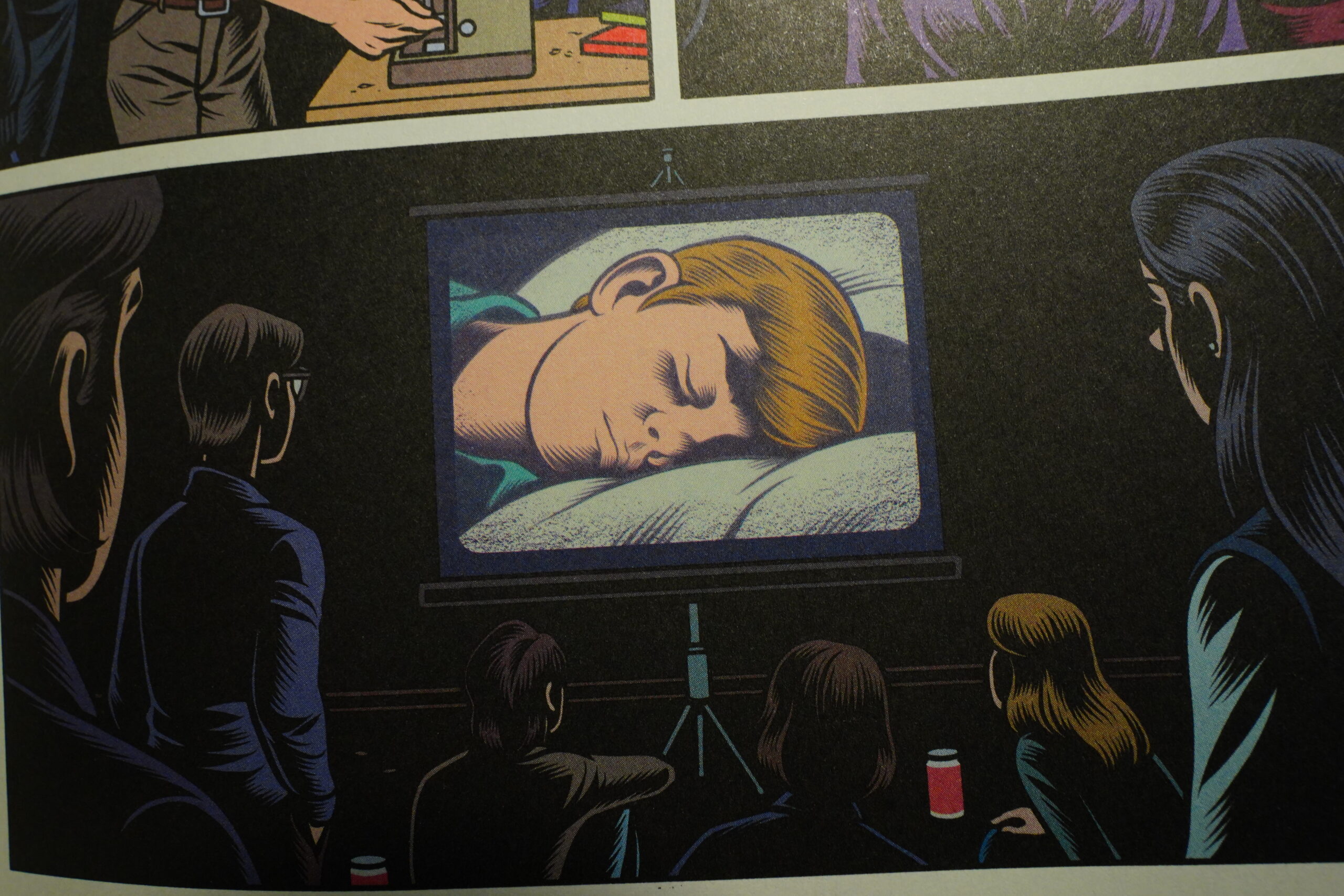
And when they’re showing their own movies (surely done on Super8, but it isn’t specified) they’re like… 3:2? Or something? I assure you, I’m just eyeballing things and didn’t get out my measuring equipment.

OOPS! SLANDER! THAT”S CGI
Anyway, as you may surmise from me musing about aspect ratios while reading this book, I was just a smidgen bored? Yeah, I was. But it’s good! Burns stakes the ending, and I totally understand that it’s on everybody’s Best Of lists last year.

11:19: Ugly Mug no. 8

This is anthology from the House of Harley, and the various pieces don’t seem to have clear credits… but they’re really funny. It’s a classic indie/undergroundish anthology — lots of loopy, wild stuff.
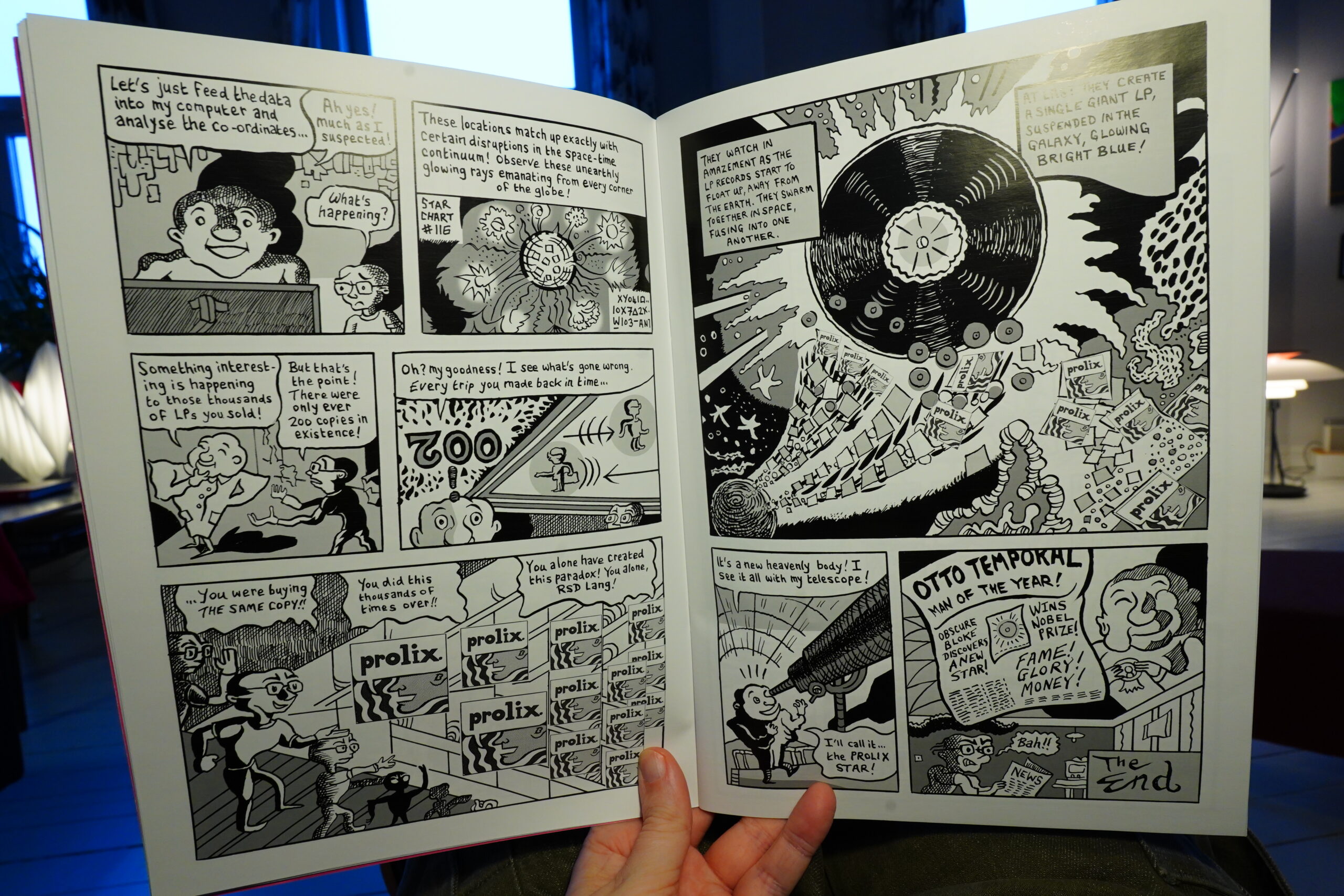
And also Ed Pinsent! There’s a name I haven’t seen in a while. And his art style changed a lot?
Anyway, class anthology. I should get the other issues.
| Various: Disco Not Disco 2 |  |
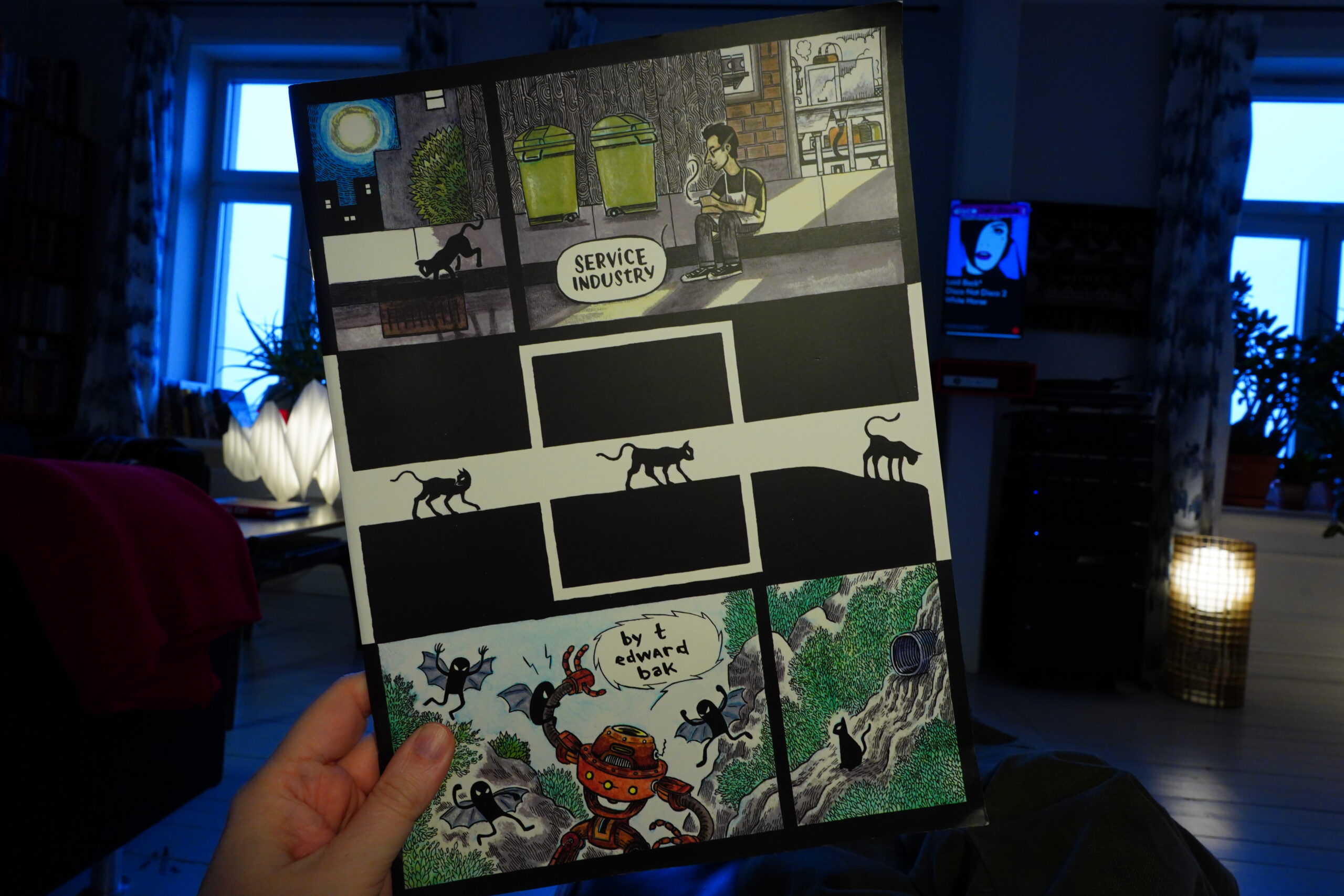
11:35: Service Industry by T Edward Bak
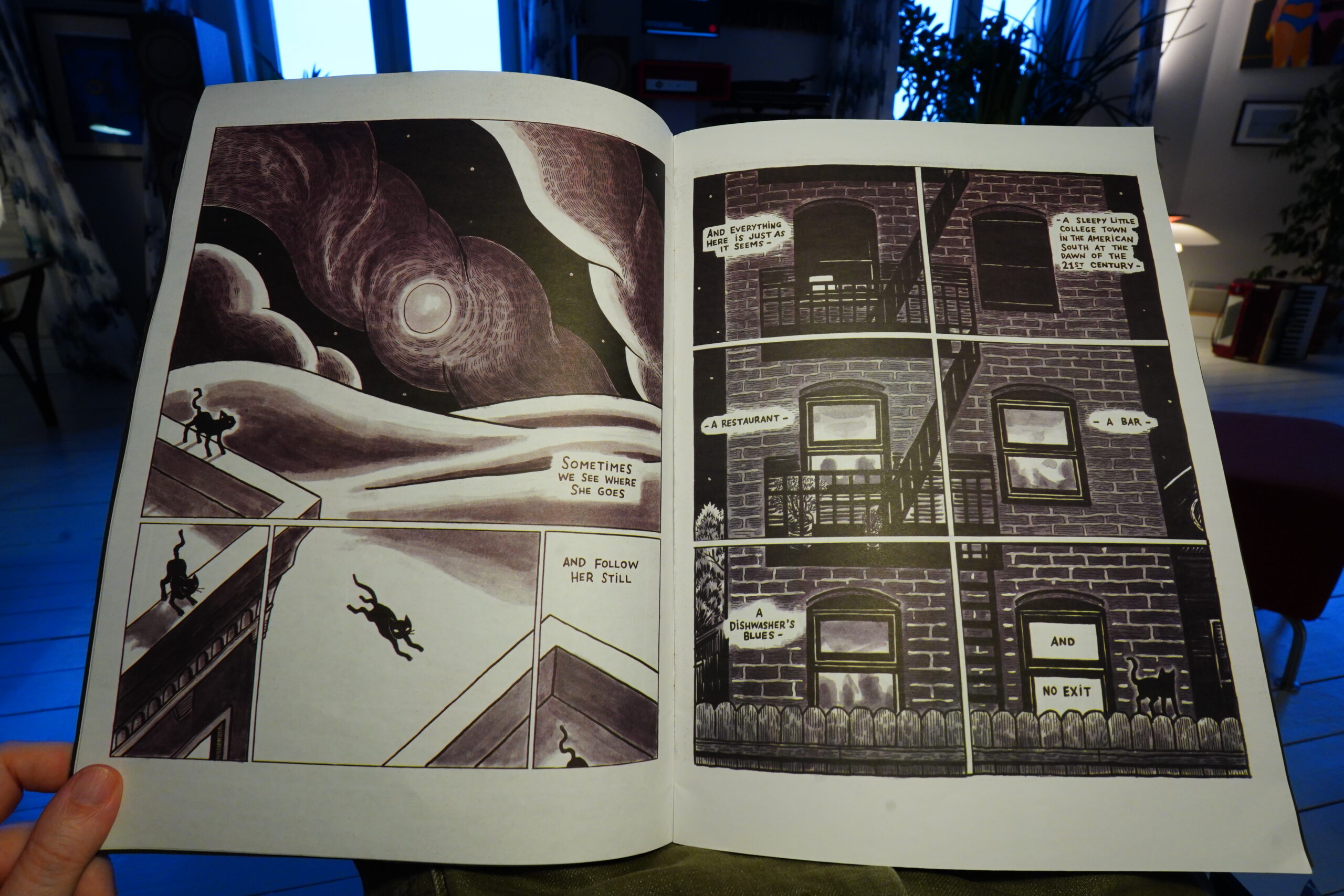
This is an oversized book from 2007…
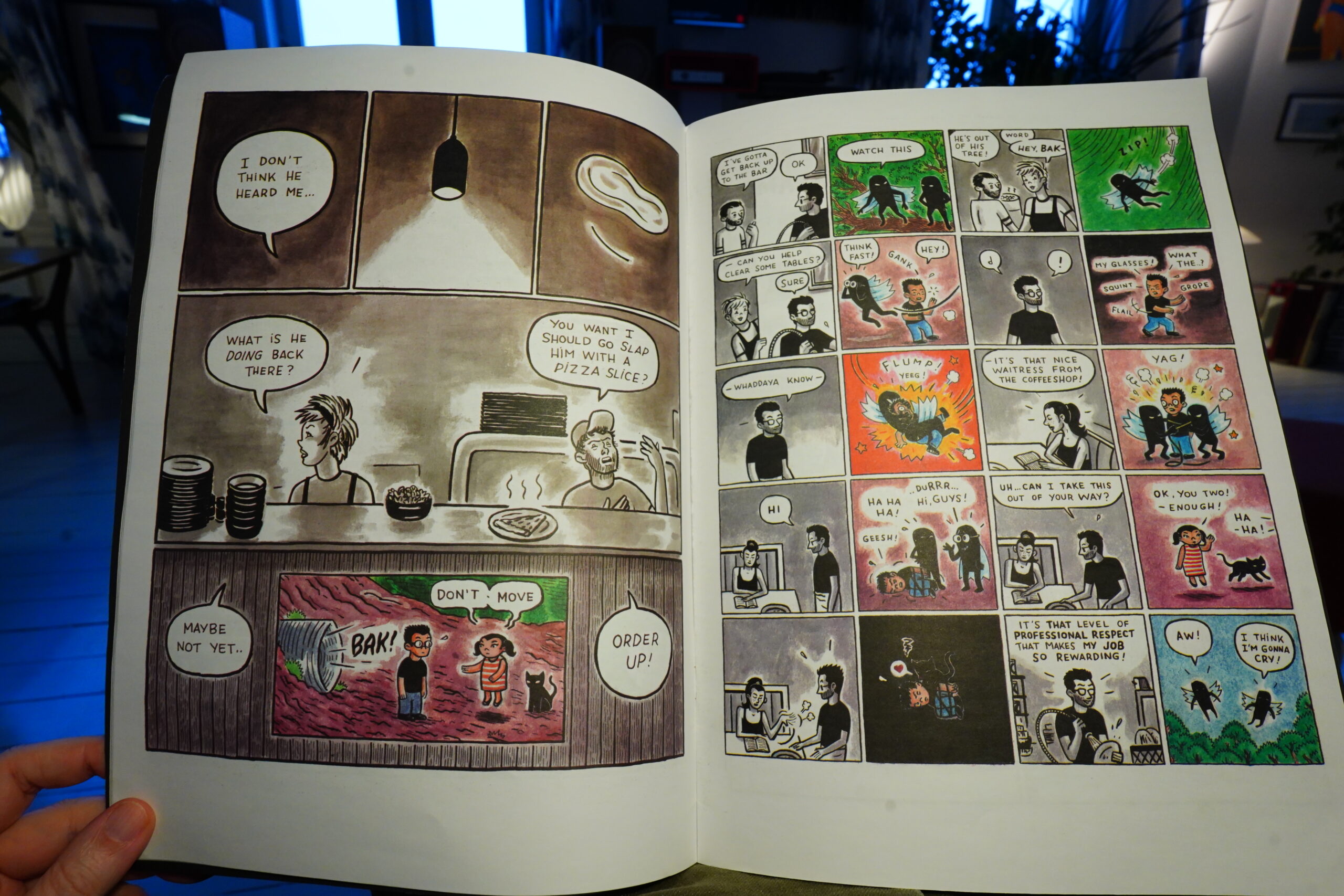
… and it’s wonderful. Ruminative and touching.

11:53: Anzuelo by Emma Ríos (Image Comics)
This book looks really handsome, but it’s published by Image? Now I’m suddenly sceptical.
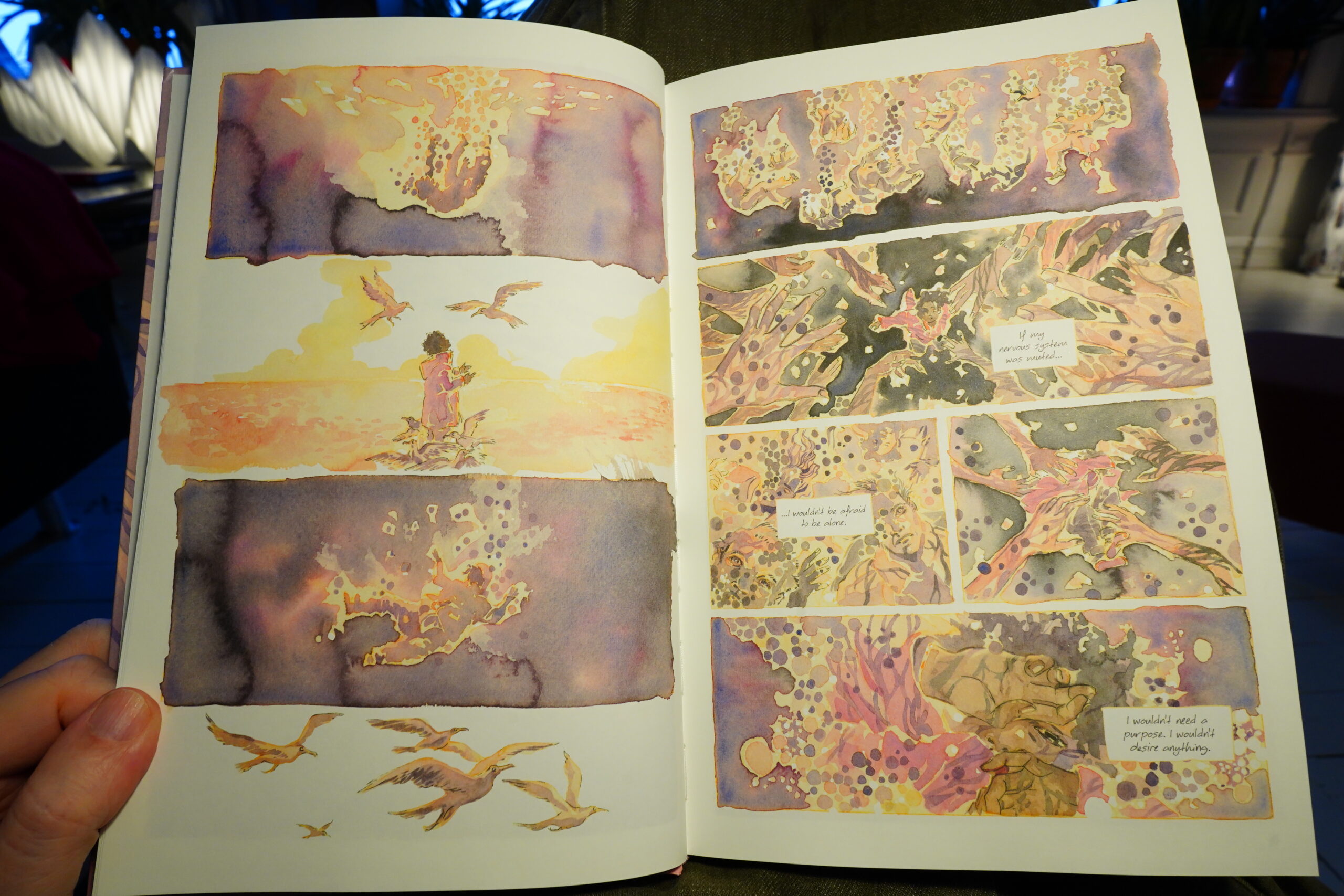
Wow, that’s some artwork. I like it. And I guess this is gonna be some religiousey/philosophical thingie… I have to say that the computer lettering is pissing me off. Choosing a font like that is just reader hostile.
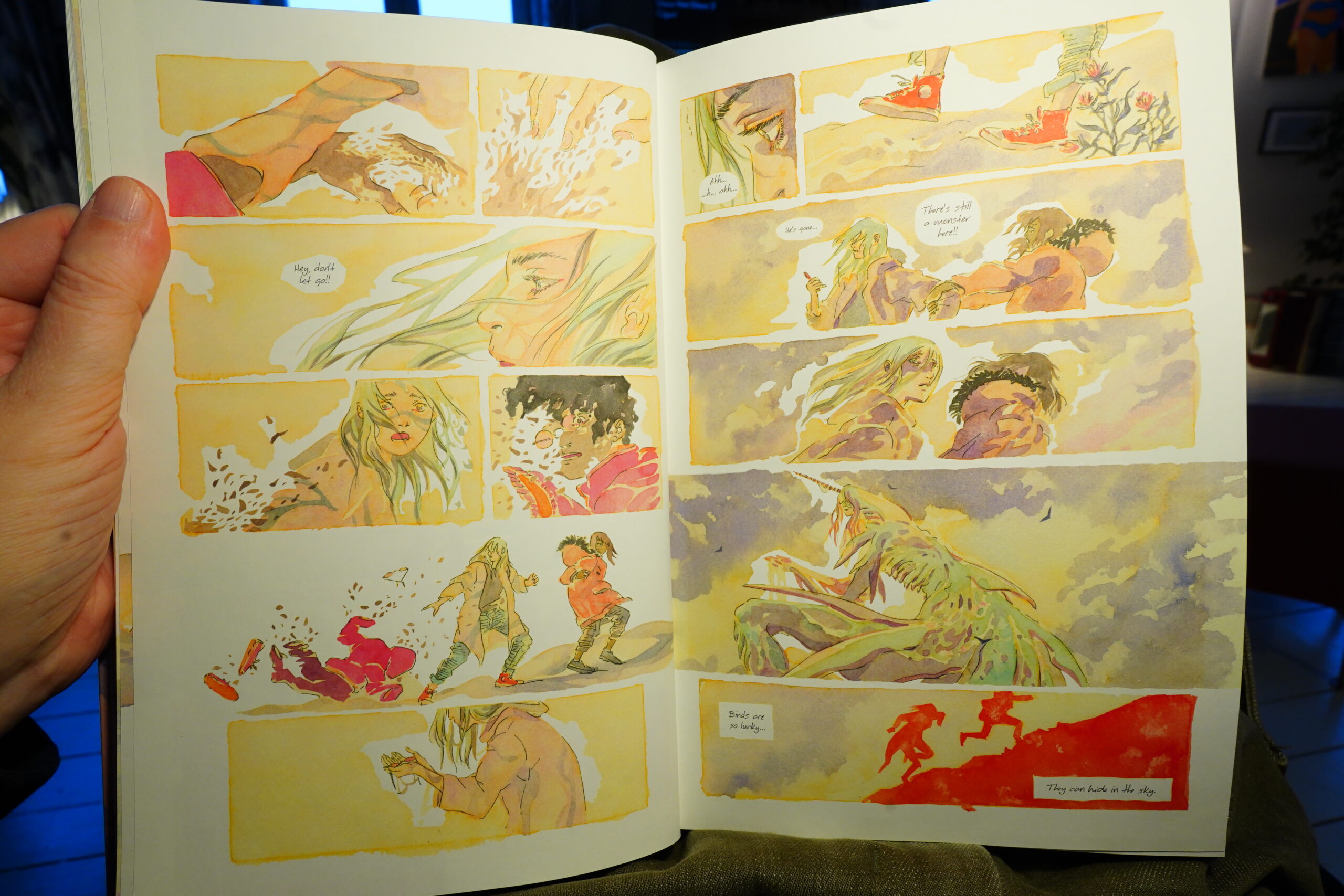
Oh! But then there’s a monster? And then they all gain super-powers?
*sigh*
Oh, Image.
I wonder who put this on their “best of” list so that I can fume a bit in their general direction. Oh. Oliver Ristau. And I see now that he also recommended 12/14 by Manix Abrera, one of the worst pieces of shit published last year, so this is all on me. My fault!
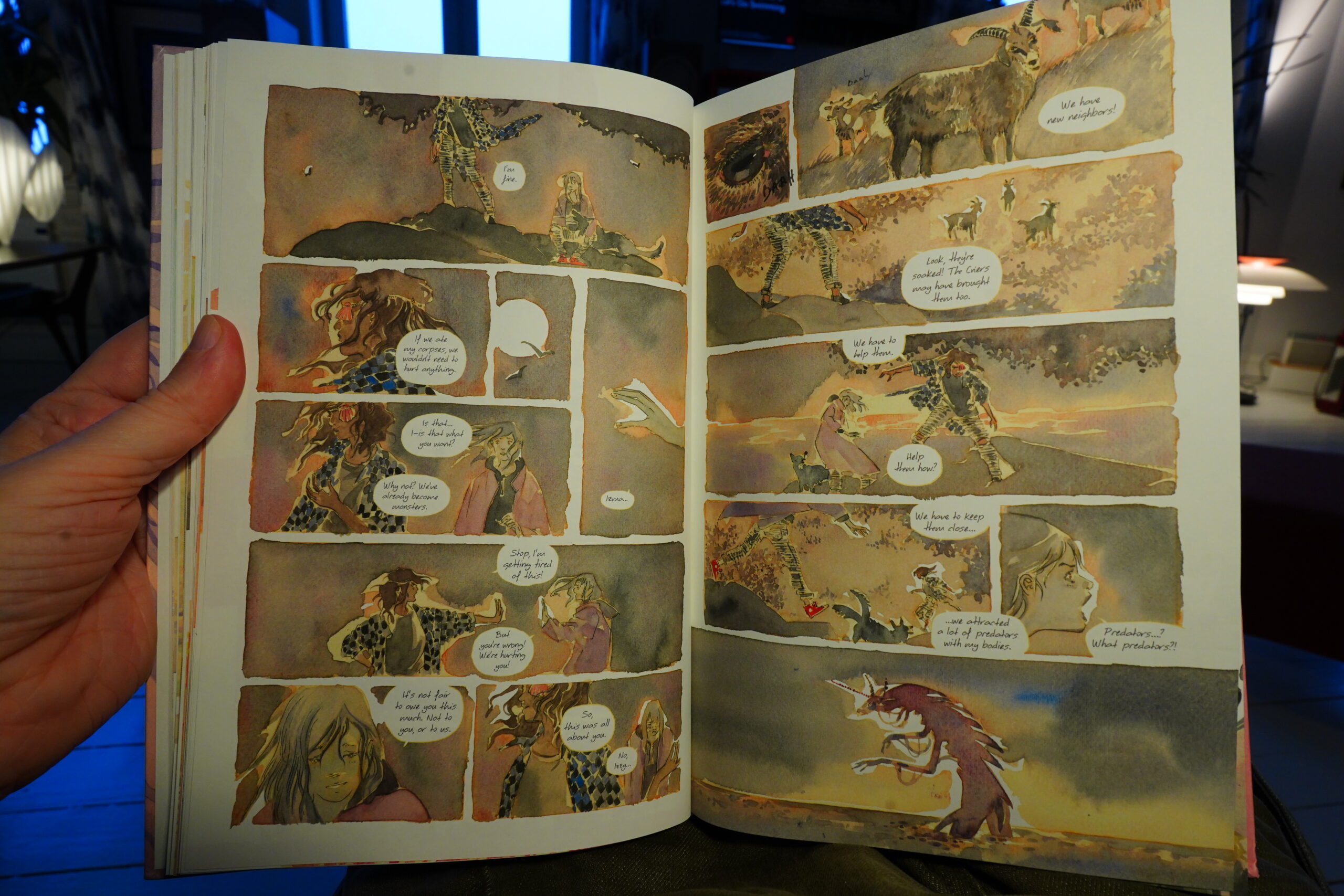
The artwork is indeed quite attractive, but nope. I’m bailing after one third.
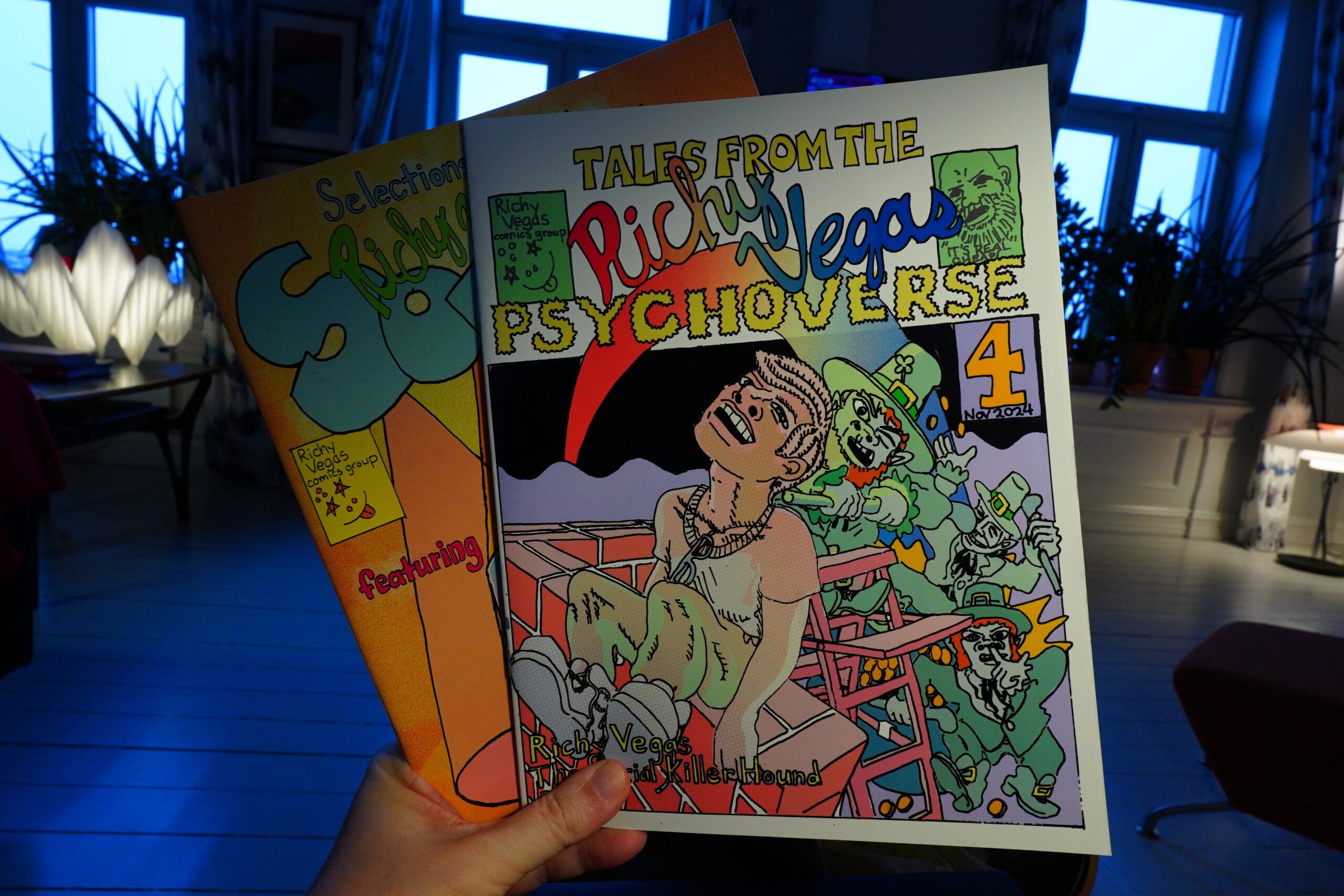
12:16: Tales from the Richy Vegas Psychoverse #4 and Songbook by Richard Alexander
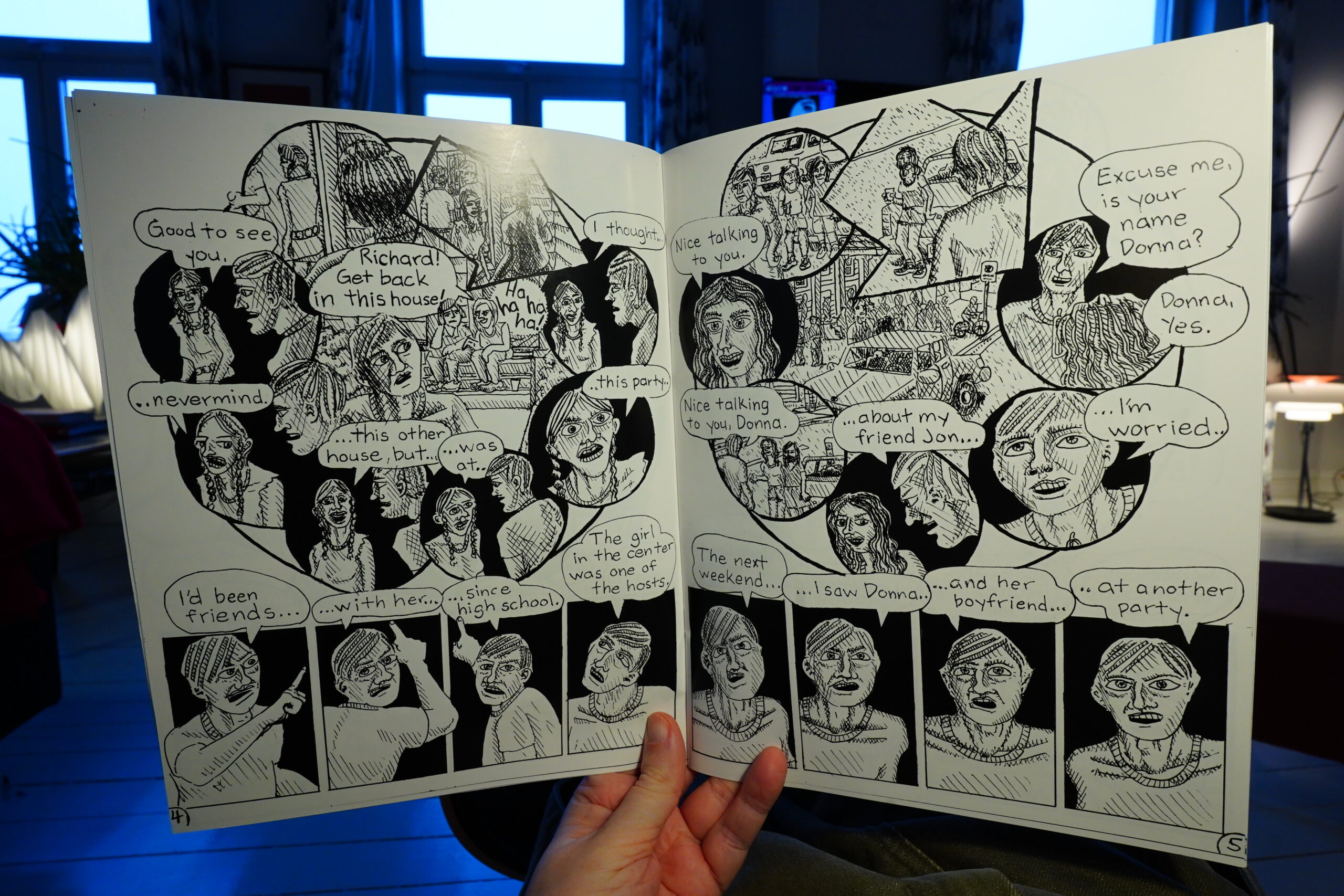
I love this book — the storytelling is unique, but easy to follow.
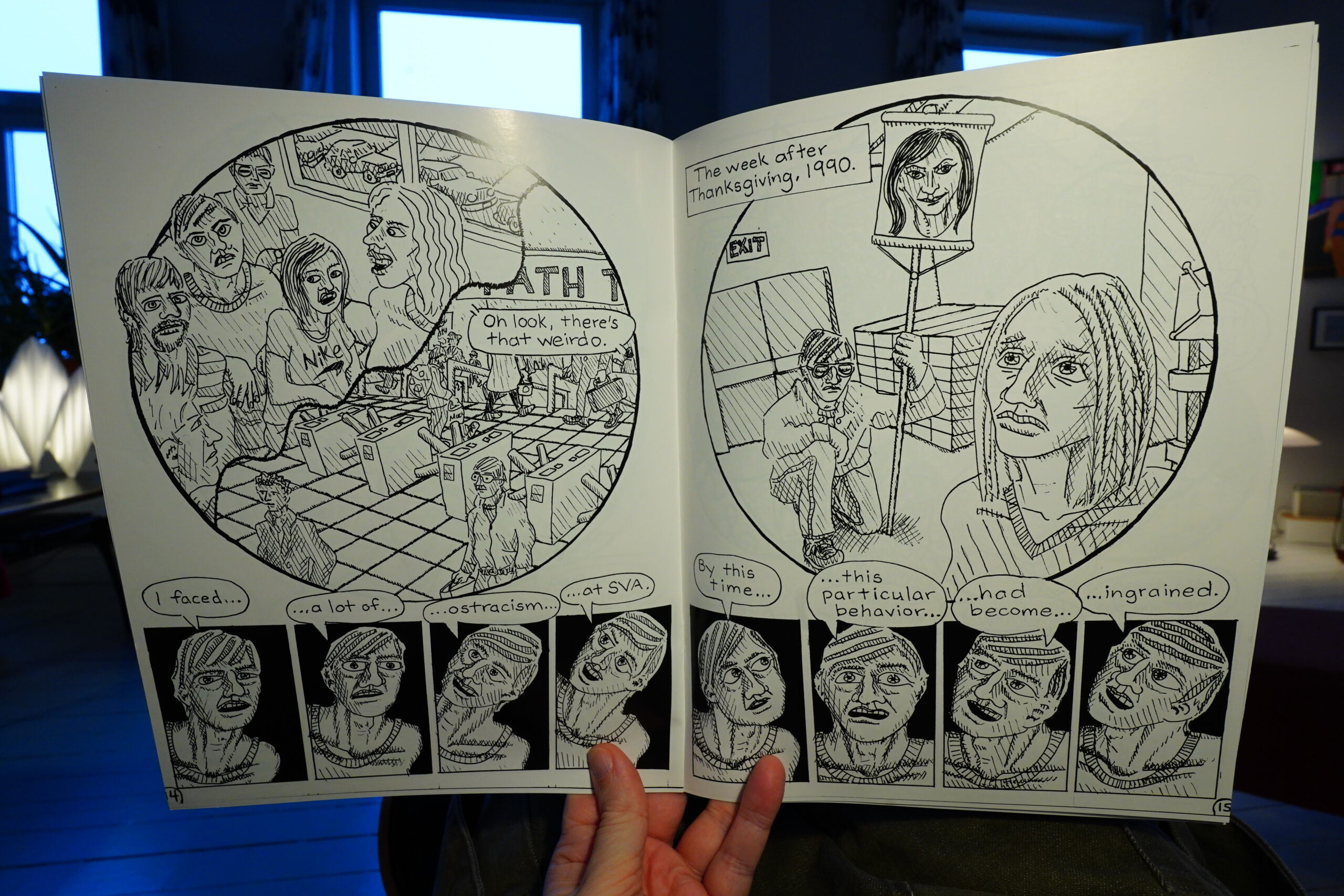
It’s gripping! Fantastic stuff; can’t wait to read the next issue.

The Songbook illustrates a song he wrote.

I like it.
| Juana Molina: Tres Cosas |  |

12:30: Mangaka 2 by Floyd Tangeman

Heh heh. Good one.

And this magazine (which collects a number of short pieces and some illustrations) is really cool.
| Moloko: Statues |  |

12:44: Amy Kurzweil by Artificial (Catapult)
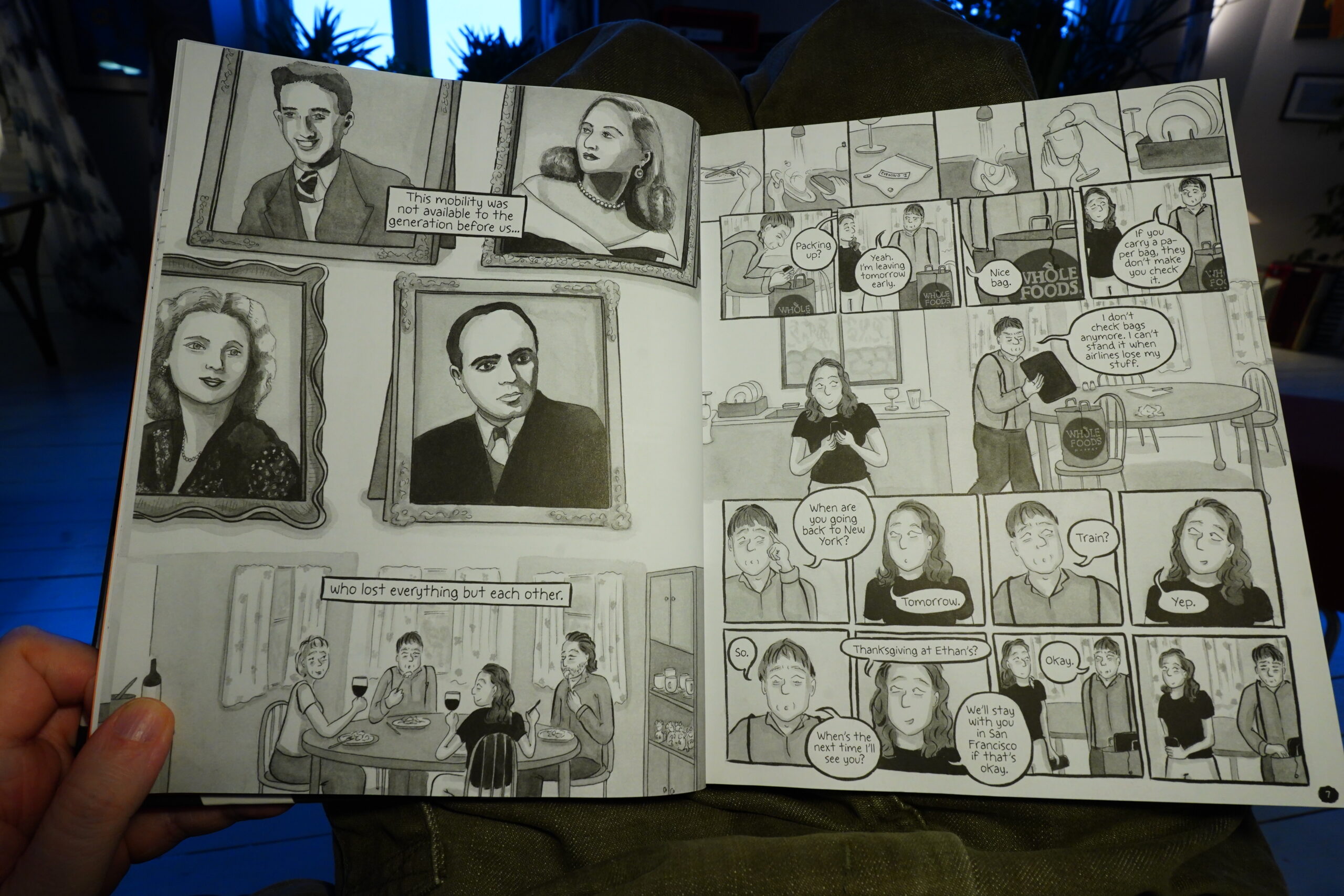
This is a hefty auto/biography — I sometimes feel that people that put together “best of” lists use a scale and then just put the books that weigh the most at the top. I’m not denying that quantity has a quality all of it’s own — but it’s rather suspicious the way most people eschew shorter works from these lists.

I love the storytelling on this — we get sequences of small panels showing people moving from one place to another, and it works so well. These sections are a delight to read. I also like the light touches in the artwork — it’s “realistic”, but flows easily, especially with the nice grey washes.
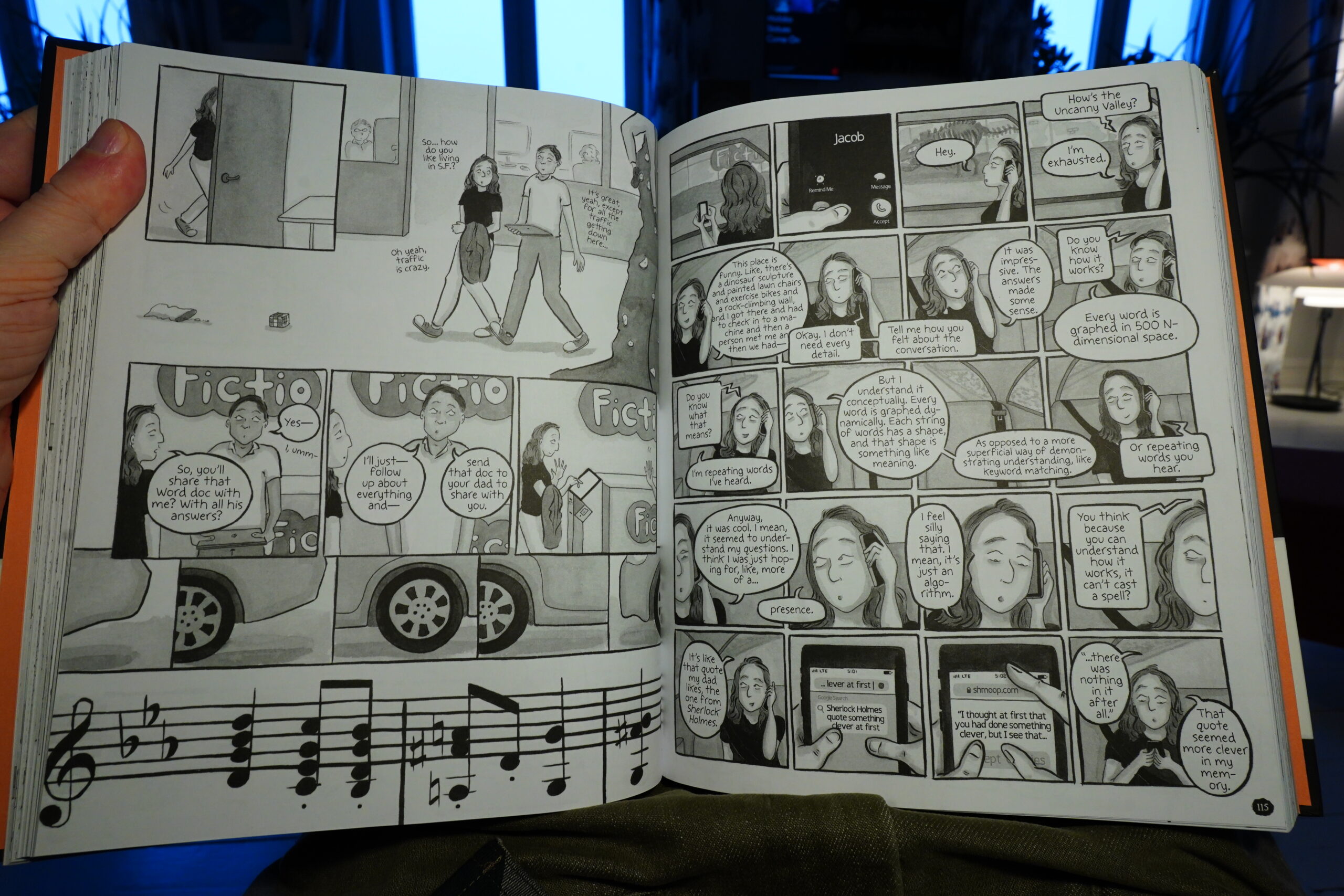
It’s just… Kurzweil tells us the story about herself, her father, her father’s father. Her father is the very famous futurist (and inventor) Ray Kurzweil, so there’s your hook, but beyond that, I feel that we’re asked (as readers) to be interested in stuff that may not be that interesting.
For instance, there’s large sections of the book where they’re putting together a computer model of her grandfather and then interacting with it. Now, I don’t know how many years this book took to create, but drawing takes time, so I guess this all started before LLMs became a thing? So time hasn’t been kind to this narrative: You could have replaced about 150 of these pages with “and then they made an LLM and found the slop it generated to be moderately interesting”.
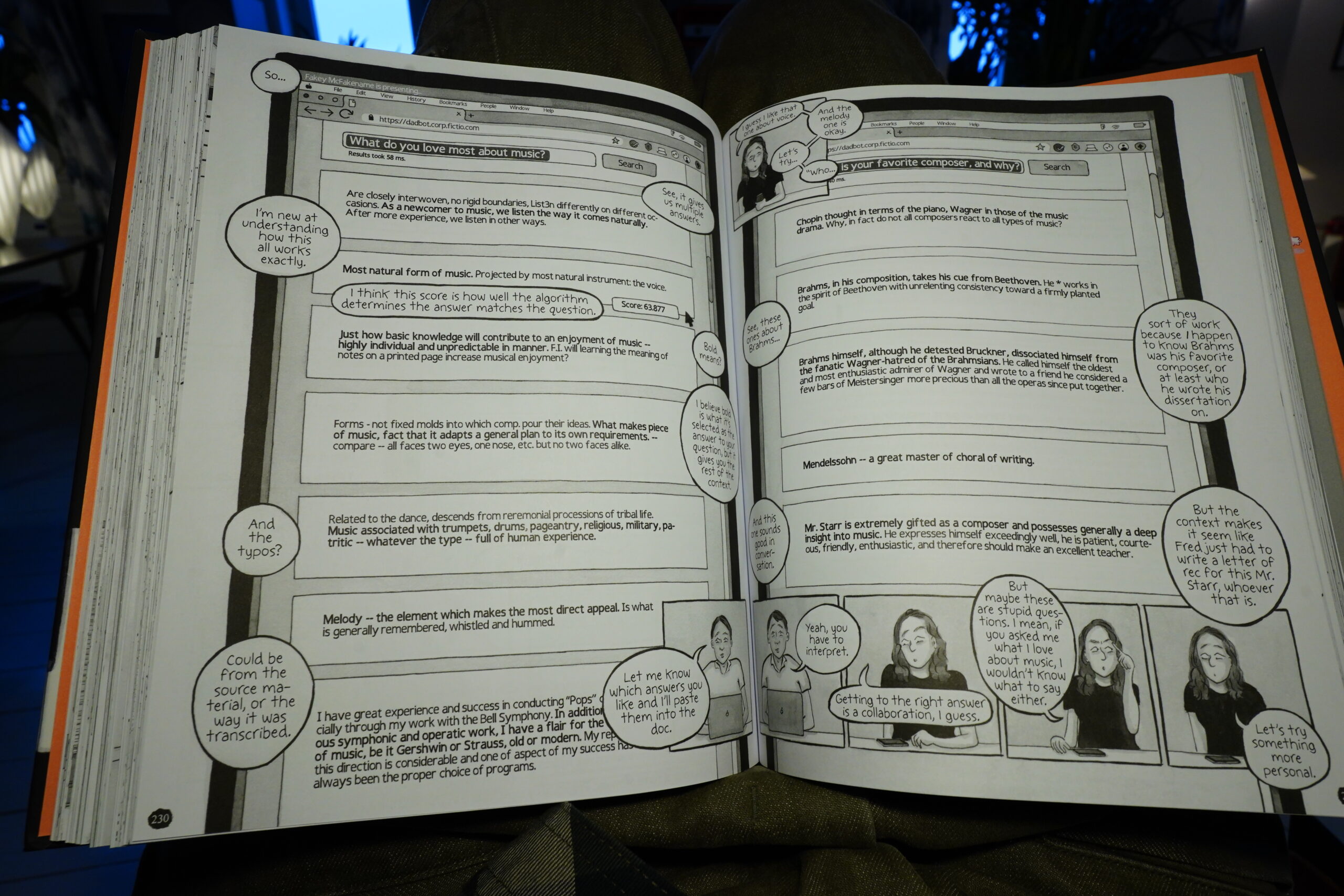
I know, it feels so cruel, but I’m not being unfair here. Sorry! And I also have to confess (well, I don’t really have to) that I started skimming these sections.
Amy Kurtzweil is obviously a very talented cartoonist and storyteller, so I’d be interested in reading her next book. But this one? Didn’t quite land.
| Various: Secondhand Sounds: Herbert Remixes (1) |  |
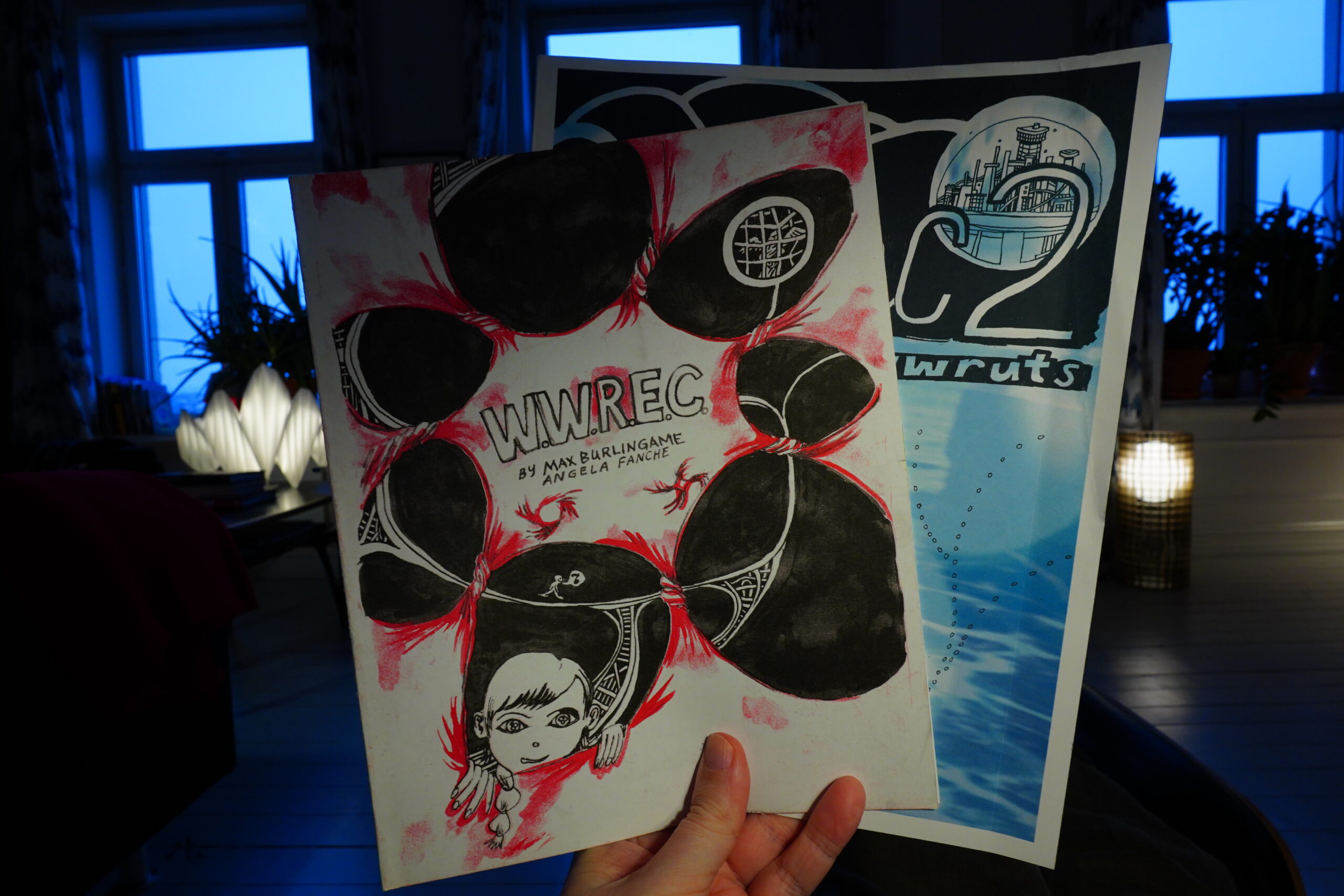
14:47: WWREC #1 & 2 by Max Burlingame & Angela Fanche

This is a collaborative book — i.e., both artists worked on these pages. The first issue is a really funny thing about shopping.
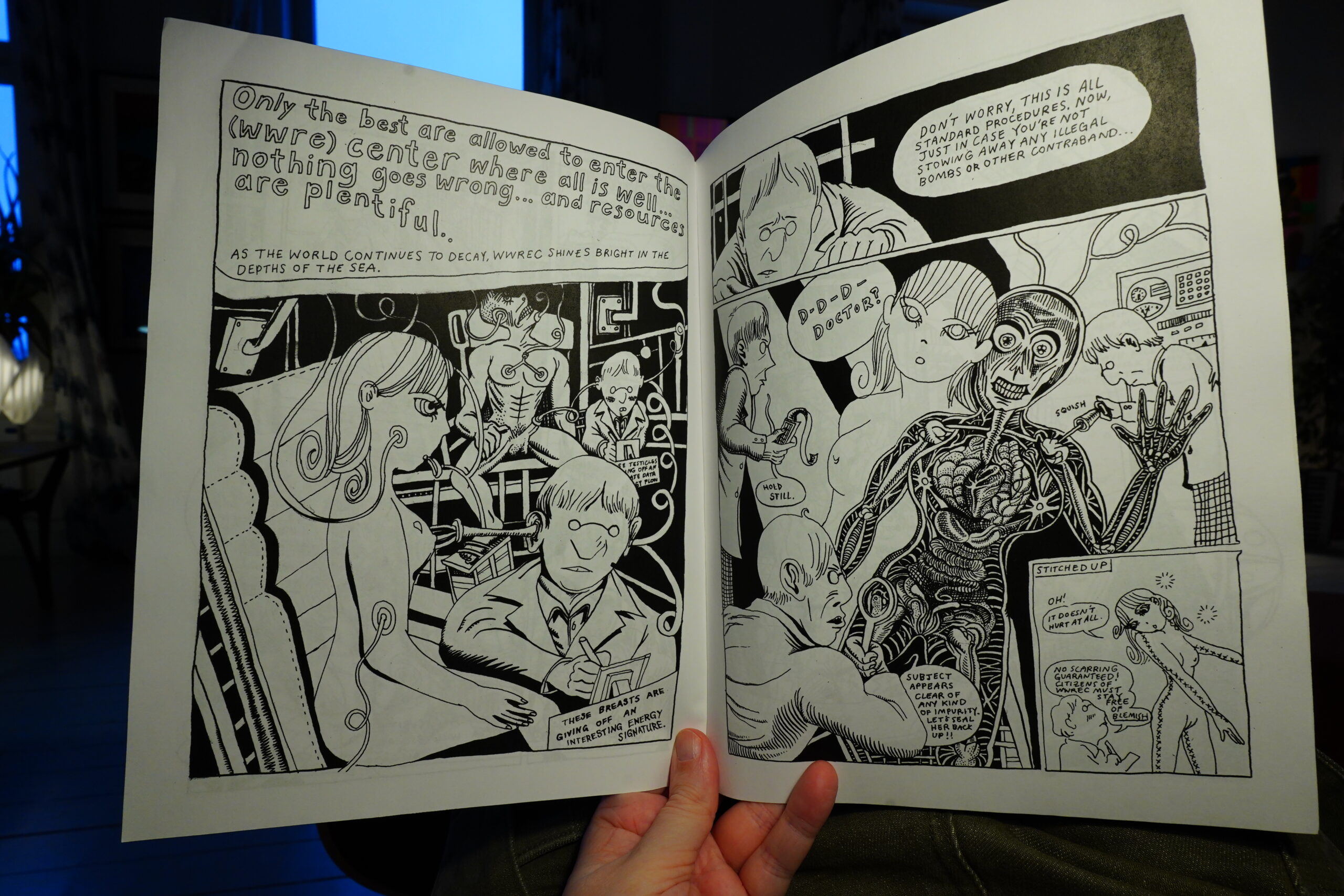
The second is a spy thriller or something. They’re cool comics.

15:09: Swag 6 by Cameron Arthur



| Max Tundra: Mastered By Guy At The Exchange |  |

15:26: Yearly 2024 by Andrew White
I bought this from here.

Nice! Two sketches.
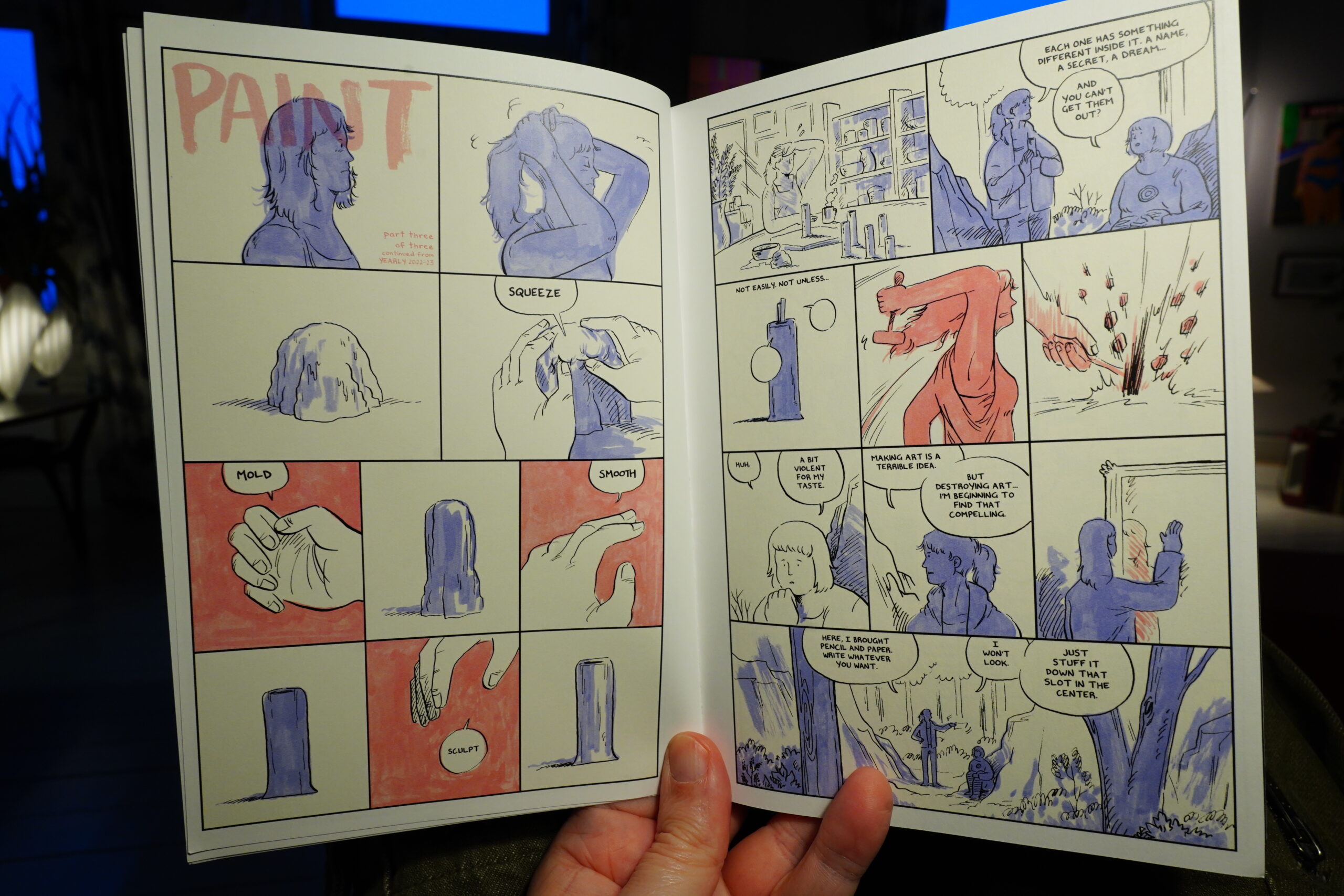
This book collects stuff White did in 2024.

And it’s a wonderful book. The pieces don’t really relate to each other, but they do anyway.

The last bit in the book is about comics.
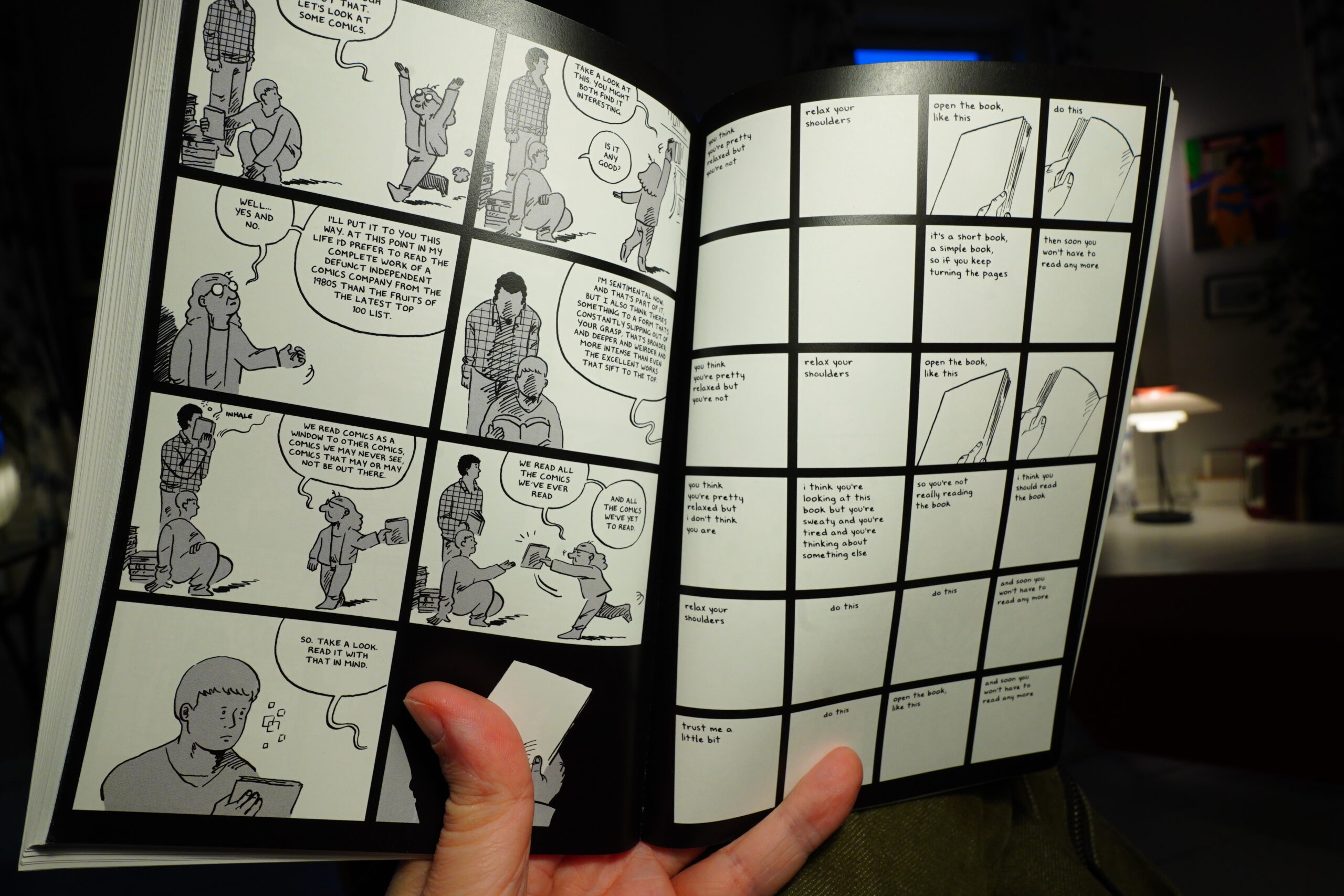
And it’s amazing.
15:54: The End
And I think I’m gonna stop reading on that high point today. And besides, I should make dinner.
